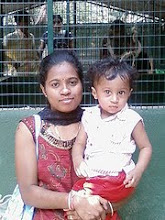10 Do’s and Dont’s for Interviews
Do:
- Remember that 7% of your impact comes from the words you say; 38% from how you say it (your tonal quality); and 55% from what your body is doing while you’re speaking. (UCLA study)
- Know that “you” is the most persuasive word in the English language, so the more you can say, “As I’m sure you know,” or “As I’m sure you’ve heard,” (Yale Univ. Study) the more easily others will respond to you.
- Sound happy when you say, “I’m happy to meet you.” (Not to mention, look your interviewer in the eye and shake their hand firmly.)
- Keep your hands where we can see them—out of pockets when standing, on the table when sitting. We trust you when we can see your hands, we don’t trust you when we can’t.
- Research the company/interviewer exhaustively. What’s their bestselling product/mission statement/biggest competitor? Why specifically do you want to work for them? How exactly are you going to contribute to their success?
- Have the answers to ‘softball questions/inquiries’ (questions so big you don’t know what to swing at) such as, “What was your favorite thing about your last job?” or “Tell me about yourself.” These should be grounded in a story such as, “My favorite thing about my last job was the opportunities I had to work with my team. For example, we once had 24 hours to put together a presentation….”
- Have the answer to, “What’s your greatest strength/weakness?” (FYI: Your greatest weakness is just a strength taken to an extreme, “I’m so interested in my subject, I tend to inundate people with detail about it. But I’m learning to pick and choose what information will be most effective,” etc. )
- Record a professional voice mail greeting, as this is the first contact many potential employers will have with you. Stand while you record it, smile, inhale, hit record, speak on an exhalation.
- Clean up your Facebook/MySpace/Twitter page. Any posts or photos that don’t say, “I can be trusted with $100,000” have to go.
- Get a thank you note in the mail—either email, snail mail, or both—within 24 hours. In addition to acknowledging the time they gave you, this should reference a story you, or they, told. Give yourself bonus points if you can include a link to an article you mentioned, or hard copy of the same.
Don’t:
- Use useless modifiers. (Great, amazing, incredible, etc.) Something is only one of these things if you tell me why.
- Sit with a “too cool for school” attitude (leaning back, one leg crossed over the other, one arm thrown over the back of the chair.) Sit up and forward in your chair. Lean toward your interviewer. Smile.
- Use ‘hope’ as a strategy—as in, “I hope nobody asks me that.” Prepare answers to the worst three questions you anticipate getting. Practice them out loud.
- Forget you are interviewing from the time you arrive at the building—many employers can see you from the parking lot, or are in the elevator with you. This is not the time to brush your hair, remove your gum, finish your phone call about your date last night.
- Arrive wearing MP3 headphones in your ears/sunglasses on your head/ carrying a bag that’s bulging with papers or old sandwiches, etc.
- Leave your PDA on, or check your PDA during the meeting, at the elevator, or on your way from the restaurant table to the door. Nothing is more important than this interview.
- Bad mouth your former employers. If you didn’t enjoy the experience, simply say you’re looking forward to still more challenges. Employers prize loyalty.
- Think they won’t be examining your table manners as closely as your resume should you be asked to lunch. Be on time. Follow their lead with regard to ordering (Don’t get the whole, de-boned fish if they’re having salads.) Short of visible shards of glass or the possibility of anaphylactic shock, eat what you’re given.
- Assume they will be helping you negotiate. Have a salary range in mind. While you should not bring up a number, if they ask, “What are you looking for?” you don’t want to choke.
- Ask, “How did I do?” at the end of the meeting. Instead, you can inquire, “So, what’s my next step?”

